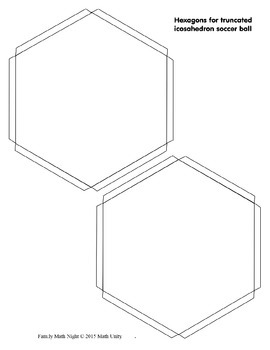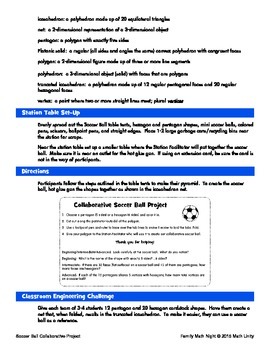STEAM: Soccer Ball Collaborative Project
- PDF
Description
Get kids excited about science, technology, engineering, art, and mathematics (STEAM) with this fun hands-on collaborative project. Typically done during a Family Math Night event, this project can also be done in the classroom. The best part is, each person is individually represented in the final product!
Participants will learn how a soccer ball design is based on a truncated icosahedron through an introduction to 2-dimensional and 3-dimensional geometry. They will create one of the panels of the truncated icosahedron which will be used to construct the collaborative soccer ball.
Final product has a diameter of 13".
Included in the lesson plan:
• list of materials needed
• mathematical background
• mathematical vocabulary
• table tent with step-by-step directions
• pentagon template
• hexagon template
• icosahedron net
• classroom engineering challenge
• link to the video version of the lesson
More great STEAM and FAMILY MATH NIGHT Collaborative Projects
If you're interested in other ideas for your Family Math Night events, I have a lot of them! Check out my blog, pinterest page, website or YouTube Channel. And if you have questions, let me know!
Family Math Night YouTube Channel
Wishing you a successful Family Math Night event!
Karyn
karyn@FamilyMathNight.com





